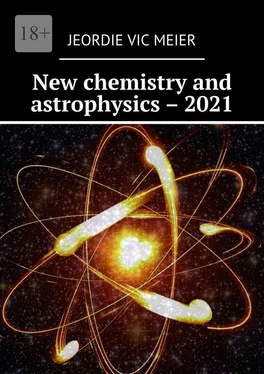The fact that some materials conduct electricity well, while others do not, speaks not of a different atomic structure, this is not the reason, but reason is in the fact that different particles of stardust with different properties are present in different chemical elements.
The melting point of substance with dense atomic structure can be maximum 1400 degrees.
There is table of conductivity of materials so you can compare them. This information helps in understanding the structure of a chemical element.
https://tehtab.ru/Guide/GuidePhysics/ElectricityAndMagnethism/ElectricalResistanceAndConductivity/ElResMics/
I give a short description of chemicals, in which I argue that they are not composed entirely of atoms.
I can give more detailed description of each chemical, describe the properties of the particles of which it is composed, their interaction with each other and their reaction to electric current, sunlight and other external influences, but now I’m tired, it would take me 6 months, but so far there is no response to my work and I do not know whether someone needs it and whether people are ready to accept this information, first they must accept the fact that all chemical elements do not consist of the same quarks that make up hydrogen, and chemical elements do not consist entirely of atoms, I do not want to waste my time on this, I have already spent a whole year on this book, this time I could devote to my other hobbies and they would bring me profit.
I know that if a global catastrophe does not occur in the civilized world, then theoretical chemistry will change and scientists will look at chemistry as I see, sooner or later they will accept my information and I would like it to happen while I am alive, and not after my death someone would have appropriated my knowledge and research for themselves and I would go down in history as Giordano Bruno who born at the stake for true knowledge about the world that the world was not yet ready to accept or Van Gogh who became popular after his death.
* in heavy chemical elements the percentage of particles that make up light chemicals such as hydrogen, oxygen, nitrogen is no more than 50%, the rest substance is other particles of stardust.
If I analyze the elements by what particles they contain, then it should be done this way, there are several types of energy, solar, electric and one more type. Particles differ in size, according to how they react to different type of energy, what energy they themselves contain, how much of this energy in them. In short, how the material and particles in it react to the sun and electricity, as well as their effect on a living cell.
– Helium.
Helium atom is formed when hydrogen atom has additional energy to attach new hadrons to itself.
There must also be helium, which was formed as a result of destruction of the oxygen atom in the sun. I suppose that this deformed atom is dangerous for humans because it has little energy, it is in the upper layer of atmosphere because helium is lighter than oxygen and protects us from solar radiation. But it has a number of hadrons similar to normal helium.
There is little helium in the sun, and contrary to the data of scientists, there is more than 1% oxygen there. If the sun were made of helium, it would burn out much faster.
Scientists think radioactive Alpha particles are helium nuclei, but no, they are different things. What do you need to do with the helium in children’s balloons to make it radioactive? ..is this helium supposed to lose electrons? Have scientists ever managed to turn helium into dangerous radioactive Alpha particles?
You should not trust the official conclusions of scientists, after I studied all theoretical chemistry and chemical elements, I came to conclusion that scientists were engaged in inventing some facts and using their high status forced the rest world to accept their version.
3. Lithium
(Lightweight, weak internal attraction, soft, burns when heated. Melting point 180 degrees.)
Lithium has the ability to absorb gases such as oxygen and hydrogen, it contains a lot of energy, but there is no lithium atom, if lithium had an atomic structure, then its atoms would repel foreign atoms from themselves, lithium would not have such ability as the absorption of other chemical elements.
If lithium consisted of atoms with 3 electrons, then it would not be so solid, the attraction of atoms is too weak.
Different chemicals contain many different cosmic particles in different proportions and varying degrees of energy charge, this determines the physical and chemical properties of the material.
4. Beryllium.
(Melting point 1280 degrees. Hard, but brittle. Does not burn if heated. Dissolves in acids, toxic, beryllium powder is self-ignites. Good conductor of electricity.)
Just like lithium, beryllium is too hard, it cannot be made up of atoms with 4 electrons.
Toxicity is a sign of absence or small number of photons and the fact that beryllium is not a full-fledged atom with an odd number of electrons.
So Beryllium consists of stardust, a small number of defective atoms, hadrons and a few photons.
5. Boron
(Solid, high capture of thermal neutrons, dissolves in acids, melting point 2070 degrees)
Boron is a hungry substance, so it attracts what scientists call thermal neutrons, boron needs energy, which means that its particles have a small charge of energy.
Boron does not have dense atomic structure, his temperature of melting is too high.
Boron consist of few atoms and stardust.
Brown boron powder has less energy than black boron.
6. Carbon
A mysterious element, it has many modifications, if it consisted of the same atoms, then it would not be able to take on so many different forms with different physical properties. Why other chemical elements cannot do this?
All types of carbon are light atoms of substances such as nitrogen and hydrogen, the rest is sun dust of varying degrees of energy charge.
7. Nitrogen.
Essential for the body.
Аtom with odd number of electrons and photon. Nitrogen has a lot of energy.
8. Oxygen.
This is atom that lacks energy, so it attaches itself to almost all substances.
It have photon.
9. Fluorine.
(Has a gas structure. Toxic.)
But my guess it is pieces of stardust possibly attached to damaged oxygen or nitrogen atom. Fluorine is not atom, 9 electrons not rotate around pieses of Fluorine.
Fluorine ignites many substances, including water, but atom of gas cannot be such strong oxidizing agent.
Fluorine attracts particles of other substances and when it becomes too much energy it ignites.
The body does not need it and the fact that it is found in the teeth does not mean that the teeth need it, any tissue contains decay products and wastes, fluoride in toothpaste may play the role of preservative and destroyer of bacteria, but certainly not a tooth hardener.
10. Neon.
Neon atoms take in electricity, which means they have stardust particles that are not in oxygen.
This means that the quark composition of neon is not identical to the quark composition of gases such as oxygen, nitrogen and hydrogen.
11. Sodium.
(Melting point 100 degrees. Soft, soluble in water, self-igniting. Good conductor of electricity)
This is not atom, but a set of hadrons, stardust and light atoms. Sodium contains a lot of photons and solar energy, so it is useful for human body.
Sodium does not have a dense atomic structure, there are not many atoms in it, because it is easily self-igniting, let’s take the example of oxygen, nitrogen and hydrogen, these substances have atoms and dense atomic structure, but they do not ignite from each other.
If sodium was composed of atoms with 11 electrons, it would be liquid like mercury.
Читать дальше












